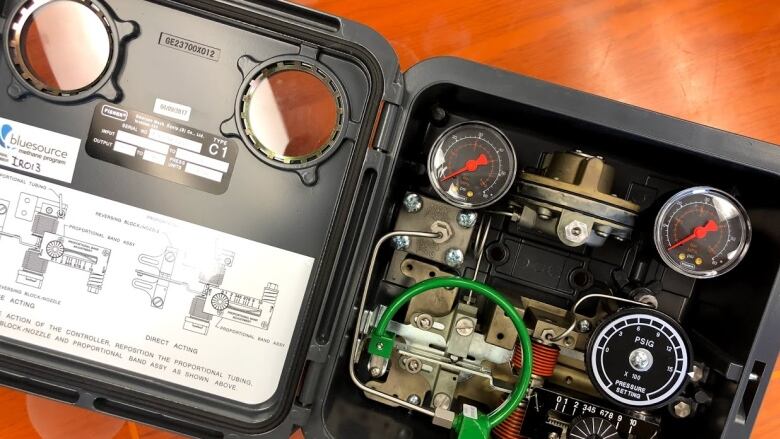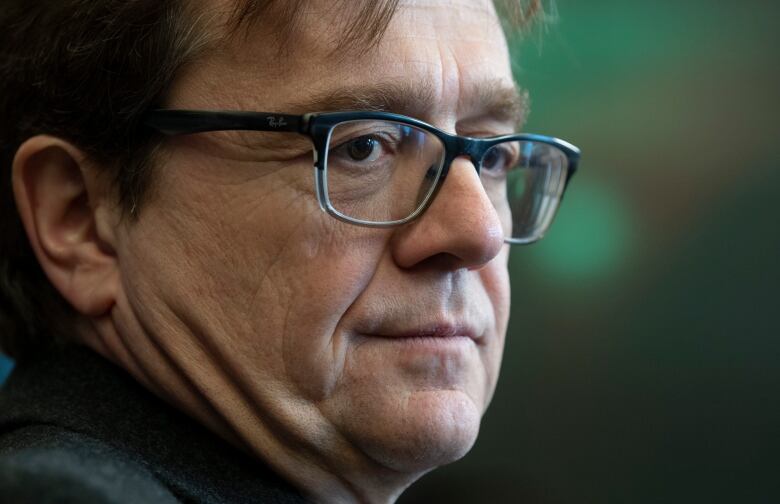Alberta, Ottawa reach preliminary deal on methane emissions regulation
Methane equivalency deal one of premier's five top requests of federal government

Alberta's new methane regulations willmeet a provincial emissions reduction target and will cost polluters half as much as adopting federal standards, provincialestimates predict.
In a bid to stop federal methane emissions regulations from applying in Alberta, the provincial government announced on Tuesday it has updated its own rules.
Now, Alberta Environment and Parks Minister Jason Nixon hopes the federal government will decree those rulesgood enough to supersede federal requirements.
"We had a better way of doing it," Nixon said in a Wednesday interview. "From our perspective, it never made any sense for the feds to try to regulate our province on this. We have the setup already within the province to take care of this."
Oil industry lobby groups have said the federal regulations aimed at reducing methane emissions are too costly and prescriptive.
The provincial government estimates the industry will have to spend $650 million to meet Alberta's updated methane standards. Following the federal rules could cost them an estimated $1.2 billion.

Jan Gorski, a policy analystwith the Pembina Institute who studies methane emission regulation, said he'll have to crunch some data to determine whether Alberta's recent concessions will substantially reduce emissions. The province first adopted regulations in December 2018.
Earlier this year, a Carleton University study found the federal rules would be more effective at reducing Alberta's methane emissions than the old provincial rules.
'Low hanging fruit' of emissions improvements
Methaneis 25 times more potent than carbon dioxide as a greenhouse gas, and accounts for 15 per cent of Canada's total greenhouse gas emissions, according to Environment and Climate Change Canada (ECCC).
In 2014, the oil and gas sector was responsible for 70 per cent of Alberta's 2014 methane emissions, according to the Alberta Energy Regulator. That year, Alberta released the equivalent of 31.4 megatonnes of carbon dioxide in methane gas.
From our perspective, it never made any sense for the feds to try to regulate our province on this. We have the setup already within the province to take care of this- Alberta Environment and Parks Minister Jason Nixon
Methane, in the form of natural gas, can escape throughout the phases of oil production. Some releases, in the forms of venting or flaring, are intentional.
"Methane has always been touted as one of the most cost-effective opportunities to reduce emissions in the oil and gas sector," Gorski said Wednesday. "It's really the low-hanging fruit."
British Columbia has already achieved an emissions equivalency agreement with Ottawa, and Saskatchewan's agreement is in the works.
Both Alberta and Ottawa's methane regulation rules took effect on Jan. 1, 2020. Alberta's goal, as established by the former NDP government, was to reduce emissions to 45 per cent below 2014 levels by 2025.
Nixon said Alberta's new rules will do that,reducingmethane emissions by 19 megatonnes of carbon dioxide equivalent by 2024.
Modelling held up agreement
In a Wednesday statement, Canadian Association of Petroleum Producers CEO Tim McMillan said the preliminary agreement is "good news" that will hopefully freeoil and gas producers from complying with two sets of conflictingrules.
He also praised the provincial regulations' "flexible" approach. Alberta's rules allow companies to use averages, rather than all facilities meeting emissions targets.
Nixon said the rules are also less prescriptive about how companies meet the targets that's up for producers, not the government, to decide, he said.
In December, when a cadre of Alberta cabinet ministers travelled to Ottawa looking for solutions to western alienation, a methane equivalency agreement was one of Premier Jason Kenney's top-five requests.
Nixon said reaching a preliminary deal does help improve the sometimes tense relations between Alberta's United Conservative Party Government and the federal Liberal government.
Moira Kelly, press secretary for federal Environment and Climate Change Minister Jonathan Wilkinson, said Wednesday the federal government is encouragedAlberta was willing to strengthen its methane regime.
"Cleaner oil and gas operations are key to Canada's climate change commitments under the Paris Agreement, as well as Alberta's own provincial goals," she said in a statement.
Alberta's rule changes are technical, and involve tweaks such as removing emissions exemptions for certain instruments, reducing gas venting limits from compressors, bumping some requirement dates aheadand more.
The equivalency agreement still needs federal cabinet approval and will be posted publicly for comment for 60 days before it is finalized.












_(720p).jpg)


 OFFICIAL HD MUSIC VIDEO.jpg)
.jpg)



























































































